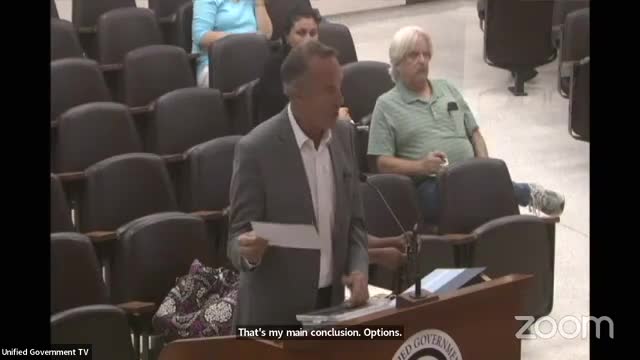Study reveals $22 million in potential savings from government consolidation
September 06, 2024 | Wyandotte County, Kansas
This article was created by AI summarizing key points discussed. AI makes mistakes, so for full details and context, please refer to the video of the full meeting. Please report any errors so we can fix them. Report an error »

In a recent government meeting, discussions centered around a cost-saving study that identified approximately $22 million in potential annual savings through the consolidation of duplicated services between the Unified Government (UG) and the Board of Public Utilities (BPU). The study, led by former state senator and performance auditor, highlighted the existence of 13 overlapping departments and functions, suggesting that both entities are incurring unnecessary expenses by maintaining separate operations.
The methodology for the study involved a detailed line-by-line comparison of the budgets from both the UG and BPU, revealing significant redundancies in areas such as human resources, information technology, and fleet management. The findings indicate that a substantial portion of both budgets—estimated at around 85%—is allocated to employee compensation, further emphasizing the potential for savings by reducing duplicated personnel.
Historically, the idea of consolidating the city, county, and BPU has been revisited multiple times since the first studies in the late 1960s, with a significant push occurring in the 1990s. However, the consolidation of the BPU was postponed due to political tensions between city and county officials. The recent study aims to reignite this conversation, with proponents arguing that consolidation could lead to more efficient use of taxpayer dollars and improved services for residents.
The meeting underscored the urgency for further inquiry into these findings, as residents have expressed concerns over rising utility rates and service fees. With reports of an 18% increase in rates over the past three years, officials are keen to explore avenues that could alleviate financial burdens on the community.
As discussions continue, the focus remains on ensuring that the interests of the residents are prioritized, with the potential for significant cost savings and improved service delivery at the forefront of the agenda.
The methodology for the study involved a detailed line-by-line comparison of the budgets from both the UG and BPU, revealing significant redundancies in areas such as human resources, information technology, and fleet management. The findings indicate that a substantial portion of both budgets—estimated at around 85%—is allocated to employee compensation, further emphasizing the potential for savings by reducing duplicated personnel.
Historically, the idea of consolidating the city, county, and BPU has been revisited multiple times since the first studies in the late 1960s, with a significant push occurring in the 1990s. However, the consolidation of the BPU was postponed due to political tensions between city and county officials. The recent study aims to reignite this conversation, with proponents arguing that consolidation could lead to more efficient use of taxpayer dollars and improved services for residents.
The meeting underscored the urgency for further inquiry into these findings, as residents have expressed concerns over rising utility rates and service fees. With reports of an 18% increase in rates over the past three years, officials are keen to explore avenues that could alleviate financial burdens on the community.
As discussions continue, the focus remains on ensuring that the interests of the residents are prioritized, with the potential for significant cost savings and improved service delivery at the forefront of the agenda.
View full meeting
This article is based on a recent meeting—watch the full video and explore the complete transcript for deeper insights into the discussion.
View full meeting
